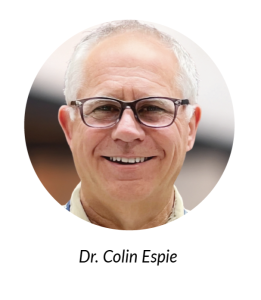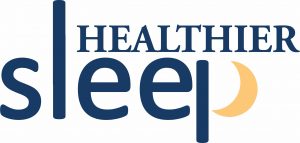For more than a generation, international guidelines have recognized that cognitive behavioral therapy (CBT) is the recommended initial treatment for chronic insomnia in adults of any age, and that this is a recommendation clinicians should follow under most circumstances. From young people to the elderly, from those who are otherwise healthy to those with medical or psychiatric comorbidities or even with another sleep problem, CBT offers the promise of improved quality of sleep for patients with chronic insomnia.
Unfortunately, we will never have enough therapists to treat everyone who seeks CBT for insomnia relief. How can we scale CBT to fit this need? The obvious answer is mental health digital treatments, or digital therapeutics, which can deliver CBT through mobile apps to millions of people instantly and simultaneously.
Digital therapeutics raise suspicious eyebrows among sleep professionals – for good reason. This is a massively capitalized industry, valued at $3.5 billion and projected to reach $22 billion within 10 years, so it’s an understandable concern that apps can be products of consumerism and smart marketing and not methods of treatment. Some are.
Yet chronic insomnia is a healthcare crisis in need of an immediate solution and no solution holds more promise than digital CBT to meet this need. How can we address and overcome the two primary challenges of digital therapeutics to deliver CBT? Here are my ideas:
Challenge: Apps for mental health problems have highly variable standards of evidence.
Solution: Digital therapeutics must be required to pass rigorous testing
All mental health digital treatments are not created equally. The best apps are evidence-based, having undergone substantial randomized controlled trials with safety and effectiveness data further verified in real-world settings. Other apps use the loose standard of evidence-informed, meaning the product has CBT content but has not undergone any trials to prove its safety or effectiveness. This approach can lead to untested apps which prioritize marketing over science. Indeed, I don’t believe that insomnia treatment apps should even be made available until they are specifically trialed for clinical benefit. We wouldn’t contemplate that for a pharmaceutical!
To be considered a digital therapeutic, the product must undergo the same rigorous testing as any approved medication. We absolutely must not lower the bar because the purpose is no less than to deliver CBT as first-line treatment for insomnia worldwide. High-quality digital therapeutics can cross this threshold, and a few already have.
Challenge: It’s hard to know which CBT apps are evidence-based, which compromises faith in all of them.
Solution: Build patient trust, and clearly differentiate digital therapeutics as a new category of treatment.
In an app store, apps can all look alike – just as a pill that’s an approved medicine, for example, can look like a pill that’s a homeopathic drug. Labels, however, clearly distinguish one from the other.
Digital therapeutics that meet high standards of testing need to be clearly labeled as proven treatments. While wellness apps hold potential in promoting relaxation, they can’t be confused with evidence-based therapies and effective digital treatments. We need a system that clearly communicates whether an app is akin to an approved treatment or the mere equivalent of a discretionary spend item like a homeopathic remedy.
It’s hard to make a pill look attractive or interesting, but it is possible to dress apps up to be more engaging. Strong evidence of efficacy, clear labeling on the app, and listing on a digital formulary should help us determine which apps are credible and which are not.
Although analogies to drugs may be imperfect, it is important to apply the same standards, if not even higher, to the digital therapeutics clinical research pipeline. Some may say that the emergence of a new approach like digital therapeutics presents the opportunity to “break the mold.” However, the counterbalance to that is that the greater the novelty, the greater the need for caution.
A Matter of Urgency
Insomnia is associated with cascading costs, not just in sleep itself but also relating to heart disease, high blood pressure, and diabetes. It’s linked to reduced work productivity and missed work. It’s hard to comprehend how much we sacrifice, on an individual and societal level, when we don’t get good quality sleep, yet have a treatable insomnia problem! Few people understand this more than the readers of this publication.
People already turn to their phones or to the internet for insomnia relief; during the first five months of the pandemic in 2020, Google had 58% more searches for “insomnia” than in the same period over the previous three years. Without the leadership of sleep scientists, wellness apps and digital therapeutics will continue to mingle as look-alikes. With our leadership, digital therapeutics can offer millions a proven insomnia treatment in a responsible manner that protects our patients, upholds our standards, provides CBT as per clinical guidelines, and enables medications to adopt the position of second-line treatments as per recommended care.

Colin Espie, PhD, DSc is Co-Founder & Chief Scientist at Big Health and Professor of Sleep Medicine at the Nuffield Department of Clinical Neurosciences, University of Oxford
References
Morin CM, Bjorvatn B, Chung F, et al. Insomnia, anxiety, and depression during the COVID-19 pandemic: an international collaborative study. Sleep Medicine. 2021;87:38-45. doi.org/10.1016/j.sleep.2021.07.035.
https://www.sciencedirect.com/science/article/pii/S1389945721004196?via%3Dihub
Qaseem A, Kansagara D, Forciea MA, Cooke M, Denberg TD; Clinical Guidelines Committee of the American College of Physicians. Management of chronic insomnia disorder in adults: a clinical practice guideline from the American College of Physicians. Ann Intern Med. 2016;165(2):125-33. doi: 10.7326/M15-2175.
https://pubmed.ncbi.nlm.nih.gov/27136449/
Edinger JD, Arnedt JT, Bertisch SM, et al. Behavioral and psychological treatments for chronic insomnia disorder in adults: an American Academy of Sleep Medicine clinical practice guideline. J Clin Sleep Med. 2021;17(2):255-262. doi: 10.5664/jcsm.8986.
https://pubmed.ncbi.nlm.nih.gov/33164742/
Madhuvanti D, Mansi P, Onkar S. Digital Therapeutics Market. Allied Market Research. July 2021. Accessed November 1, 2022. https://www.alliedmarketresearch.com/digital-therapeutics-market
Espie CA, Torous J, Brennan TA. Digital therapeutics should be regulated with gold-standard evidence. Health Affairs Forefront, February 28, 2022. doi: 10.1377/forefront.20220223.739329
https://www.healthaffairs.org/do/10.1377/forefront.20220223.739329/
Espie CA, Firth J, Torous J. Evidence-informed is not enough: digital therapeutics also need to be evidence-based. World Psychiatry. 2022;21(2):320-321. doi: 10.1002/wps.20993
https://onlinelibrary.wiley.com/doi/full/10.1002/wps.20993
Javaheri S, Redline S. Insomnia and risk of cardiovascular disease. Chest. 2017;152(2):435-444. doi: 10.1016/j.chest.2017.01.026
https://www.sciencedirect.com/science/article/abs/pii/S0012369217301344
Jarrin DC, Alvaro PK, Bouchard MA, Jarrin SD, Drake CL, Morin CM. Insomnia and hypertension: a systematic review. Sleep Med Rev. 2018;41:3-38. doi: 10.1016/j.smrv.2018.02.003.
https://pubmed.ncbi.nlm.nih.gov/29576408/
LeBlanc ES, Smith NX, Nichols GA, et al. Insomnia is associated with an increased risk of type 2 diabetes in the clinical setting. BMJ Open Diabetes Research and Care. 2018;6(1). doi: 10.1136/bmjdrc-2018-000604
https://drc.bmj.com/content/6/1/e000604
Espie CA, Pawlecki B, Waterfield D, Fitton K, Radocchia M, Luik AI. Insomnia symptoms and their association with workplace productivity: cross-sectional and pre-post intervention analyses from a large multinational manufacturing company. Sleep Health. 2018;4(3):307-312. doi: 10.1016/j.sleh.2018.03.003
https://www.sciencedirect.com/science/article/abs/pii/S2352721818300421
Godet-Cayré V, Pelletier-Fleury N, Le Vaillant M, Dinet J, Massuel MA, Léger D. Insomnia and absenteeism at work. Who pays the cost? Sleep. 2006;29(2):179-84. doi: 10.1093/sleep/29.2.179
https://pubmed.ncbi.nlm.nih.gov/16494085/
Zitting K-M, Lammers-van der Holst HM, Yuan RK, Wang W, Quan SF, Duffy JF. Google Trends reveals increases in internet searches for insomnia during the coronavirus disease 2019 (COVID-19) global pandemic. J Clin Sleep Med. 2021;17(2):177–184. doi: 10.5664/jcsm.8810



